Coconino National Forest
- December 26, 2023
- 0 comment
Stretching across two million acres of northern Arizona, the Coconino National Forest is a captivating tapestry of natural wonders and diverse ecosystems. Originally established in 1898 as the “San Francisco Mountains National Forest Reserve,” it gained its current designation as a U.S. National Forest in 1908. Named after the Coho Native American people, the forest encompasses three distinct districts: Flagstaff, Mogollon Rim, and Red Rock. From the awe-inspiring peaks of the San Francisco range to the iconic red rock formations near Sedona, the landscape is as varied as it is breathtaking.
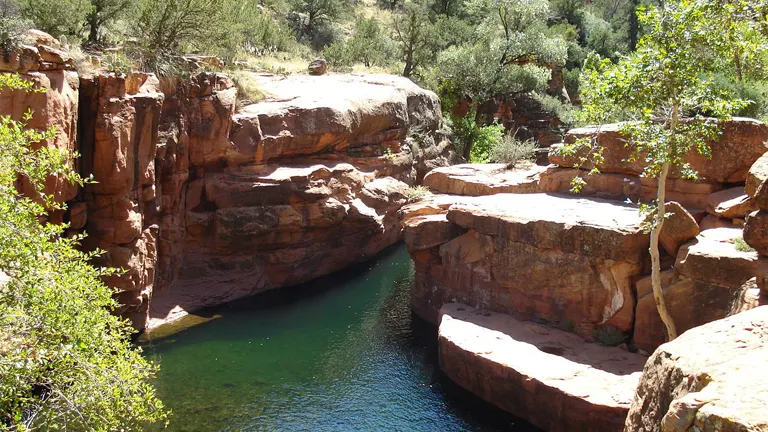
With elevations ranging from 2,600 to 12,633 feet, the forest boasts a mosaic of environments, including deserts, ponderosa pine forests, alpine tundra, and ancient volcanic peaks. Beyond its stunning natural beauty, Coconino National Forest preserves a historical narrative, reflecting the delicate balance between human settlement and environmental conservation. Today, it stands as a sanctuary for outdoor enthusiasts, beckoning visitors to explore its trails, discover hidden canyons, and connect with the timeless allure of the Arizona wilderness.
Characterizing Features of the Coconino National Forest
- San Francisco Peaks: The San Francisco Peaks, dominating the Flagstaff District, are a majestic volcanic range showcasing the highest point in Arizona—Humphreys Peak at 12,633 feet. This ancient volcanic field covers 1,800 square miles, featuring tree-covered cinder cones, lava flows, and the intriguing Lava River Cave. The peaks provide a diverse and captivating landscape for exploration.
- Red Rock Formations: The Red Rock District, centered around Sedona, unveils the iconic red rock formations, mesas, and canyons that have made the region famous. These geological wonders, sculpted by millions of years of erosion, contribute to Sedona’s status as Arizona’s second most popular tourist attraction. The vibrant red hues and intricate formations create a breathtaking and unique landscape.
- Mogollon Rim: Defining the southern edge of the forest, the Mogollon Rim stretches across central Arizona, marking the boundary of the Colorado Plateau. The Mogollon Rim District features a dense ponderosa pine forest, lakes, and perennial streams. This area serves as a transition zone between the high-altitude plateaus and lower elevations, offering diverse ecological habitats and picturesque scenery.
- Diverse Vegetation Zones: Coconino National Forest boasts varied vegetation zones, from the arid lowlands with shrubs and sagebrush to the towering stands of ponderosa pine in high-altitude plateaus. The Flagstaff District, characterized by a vast ponderosa pine forest, contrasts with the alpine tundra near the San Francisco Peaks, showcasing unique flora such as Engelmann spruce and bristlecone pine.
- Historical Landmarks: The forest preserves historical landmarks, including Walnut Canyon National Monument and Sunset Crater Volcano National Monument. These sites offer insights into ancient civilizations and volcanic activity, adding cultural depth to the Coconino National Forest experience. Exploring these landmarks provides a connection to the region’s rich history.
- Recreational Lakes: Natural lakes like Mormon Lake, Ashurst Lake, and Marshall Lake dot the landscape, offering recreational opportunities such as fishing and boating. Additionally, manmade reservoirs like Upper Lake Mary and Lower Lake Mary provide water resources and scenic spots. These lakes contribute to the diverse recreational activities available within the forest.
- Distinct Districts: Divided into three districts—Flagstaff, Mogollon Rim, and Red Rock—the forest ensures a varied experience. The Flagstaff Ranger District surrounds the San Francisco Peaks, the Mogollon Rim Ranger District showcases a dense ponderosa pine forest, and the Red Rock Ranger District captivates with its famous red rock formations. Each district offers unique ecosystems, ensuring a comprehensive exploration of Coconino National Forest’s vast and varied terrain.
History
Established against the backdrop of the late 19th-century expansion and evolving land management practices, the Coconino National Forest has a rich and storied history. In 1898, President William McKinley responded to Gifford Pinchot’s advocacy for forest conservation by creating the San Francisco Mountain Forest Reserve. However, local opposition in Williams, Arizona, viewed the reserve as detrimental to Coconino County. In 1905, the Forest Reserves transitioned to the Department of Agriculture, marking a pivotal shift toward federal management.
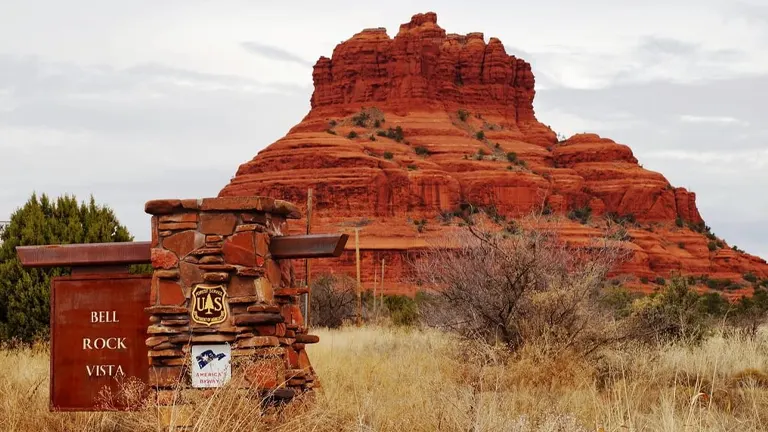
Finally, in 1908, President Theodore Roosevelt merged various forest reserves, including the San Francisco Mountains, to form the Coconino National Forest. Covering two million acres, this diverse landscape became a haven for outdoor enthusiasts and a testament to the delicate balance between human settlement and environmental preservation. Today, the Coconino National Forest stands as a testament to the enduring importance of conservation and sustainable land management in the American West.
Importance in Conservation and Recreation of Coconino National Forest
The Coconino National Forest holds profound significance in both conservation and recreation, embodying a delicate equilibrium between environmental preservation and outdoor enjoyment. As a vital component of the public domain since its establishment in 1908, this expansive forest spanning two million acres has served as a bastion of conservation efforts in northern Arizona. Its diverse ecosystems, ranging from the iconic ponderosa pine forests to ancient volcanic peaks and red rock formations, showcase a rich tapestry of biodiversity.
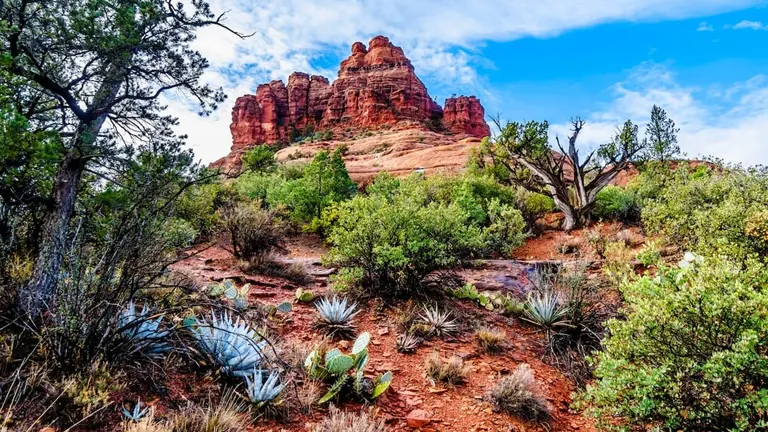
Beyond its ecological importance, the Coconino National Forest is a haven for outdoor enthusiasts, offering a plethora of recreational activities. Hiking trails wind through pristine landscapes, providing access to hidden canyons, serene lakes, and panoramic vistas. The forest also encompasses historical landmarks, such as Walnut Canyon and Sunset Crater Volcano National Monuments, contributing to the cultural significance of the region. By providing a balance between conservation and recreation, the Coconino National Forest stands as a model for sustainable land management, inviting visitors to appreciate, respect, and connect with the natural beauty it diligently preserves.
Unique Location of Coconino National Forest
Located in northern Arizona, the Coconino National Forest covers a vast two million acres, extending from the vicinity of Flagstaff. Its elevations range from 2,600 feet to Arizona’s highest point, Humphreys Peak, at 12,633 feet. What makes it special is the wide range of landscapes it includes. From the red rock formations near Sedona to the famous San Francisco Peaks in the Flagstaff District and the dense ponderosa pine forests along the Mogollon Rim, the Coconino National Forest boasts a diverse mix of ecosystems.
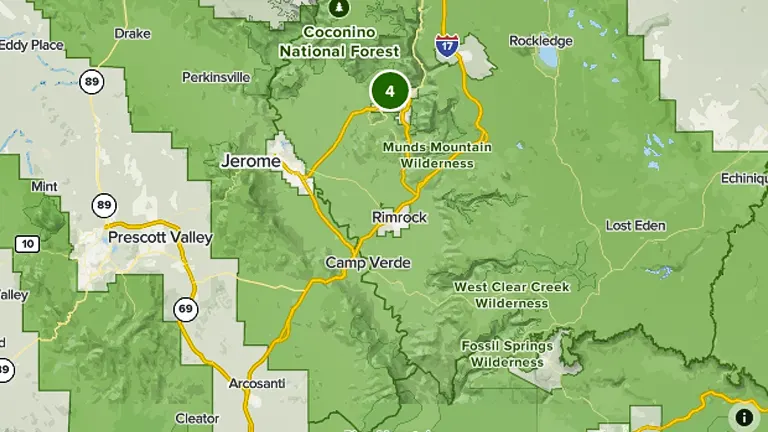
It not only surrounds lively towns like Sedona and Flagstaff but also shares boundaries with four other national forests, making it an essential part of the expansive Arizona wilderness. The forest’s strategic location contributes to its unique blend of geological wonders, rich biodiversity, and recreational opportunities, making it a must-visit for those wanting to explore the varied beauty of the American Southwest.
Diverse Vegetation and Unique Plant Species:
- Ponderosa Pine Forests: The Coconino National Forest is renowned for its extensive ponderosa pine forests, covering vast expanses of the landscape. These towering and aromatic trees thrive in the high-altitude plateaus, particularly between 6,500 and 8,000 feet, contributing to the forest’s distinctive and pleasant fragrance.
- Engelmann Spruce and Blue Spruce: At the highest elevations, particularly around the San Francisco Peaks, the forest hosts coniferous species such as Engelmann spruce and blue spruce. These hardy trees are adapted to the challenging conditions of alpine environments, adding to the unique character of the highest reaches of the Coconino National Forest.
- Bristlecone Pine: The high-altitude regions, including areas near Humphreys Peak, are home to the bristlecone pine. These ancient trees, known for their twisted and gnarled appearance, are among the oldest living organisms on Earth, adding a sense of historical depth to the forest.
- Corkbark Fir: A variety of subalpine fir known as corkbark fir is found in isolated areas of the Coconino National Forest, specifically around the San Francisco Peaks. This unique tree species contributes to the biodiversity of the high-elevation zones.
- Juniper-Pinyon Woodlands: In the lower elevations, between 4,500 and 6,500 feet, the forest transitions to juniper-pinyon woodlands. Species like alligator juniper and Utah juniper dominate this region, accompanied by Arizona cypress, manzanita, and pinyon pine, creating a distinct vegetation type.
- Quaking Aspen: Scattered among the ponderosa pine forests, particularly between 6,500 and 8,000 feet, quaking aspen stands offer a visually striking contrast with their white bark and vibrant golden leaves in the fall. Aspen stands are often the first to regenerate after wildfires, contributing to forest renewal.
- Alpine Tundra Vegetation: Above 11,000 feet, the Coconino National Forest features the only alpine tundra region in Arizona. Here, vegetation is sparse, with small grasses, lichens, and alpine wildflowers dotting the landscape, showcasing the resilience of life in extreme conditions.
- Deciduous Trees in Oak Creek Canyon: Oak Creek Canyon, part of the Red Rock District, stands out for its deciduous trees. In the fall, the canyon becomes a popular leaf-peeping destination as deciduous trees, such as oak and maple, dominate the vegetation, offering a burst of autumnal colors.
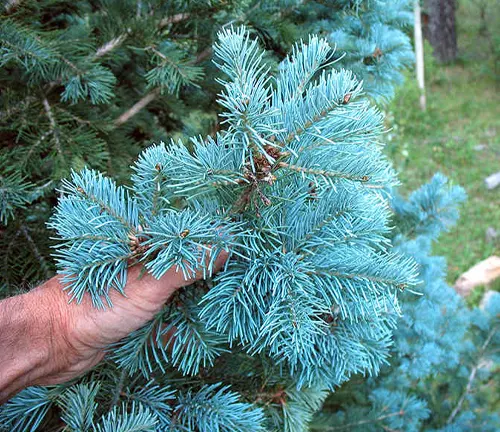
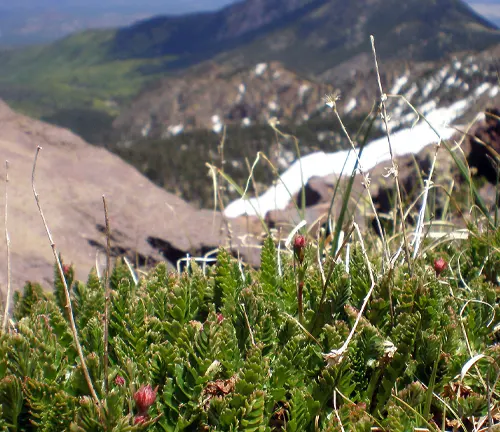
The Coconino National Forest’s diverse vegetation zones, ranging from desert shrubs to alpine tundra, contribute to its ecological richness and provide a habitat for a wide array of plant species, making it a fascinating destination for nature enthusiasts and botanists alike.
Fauna:
- Elk: The Coconino National Forest is a sanctuary for elk, where these magnificent creatures roam through the ponderosa pine forests and open meadows. With their impressive antlers and graceful presence, elk are a common sight, especially during the cooler months when they gather in larger groups. The forest’s diverse landscapes provide ideal habitats for elk, making it a key destination for wildlife enthusiasts hoping to witness these majestic herbivores in their natural environment.
- Mule Deer: Mule deer are a familiar sight throughout the Coconino National Forest, adapting to various habitats across the region. Whether traversing the high-altitude plateaus or navigating the edges of the ponderosa pine forests, these adaptable herbivores are integral to the forest’s ecosystem. Their presence adds to the allure of the Coconino National Forest, offering glimpses of these agile and resilient mammals against the backdrop of the diverse landscapes.
- Mountain Lion: The elusive mountain lion, a symbol of stealth and power, finds a home in the Coconino National Forest. Though rarely seen by visitors, these solitary predators play a crucial role in maintaining ecological balance within the forest. Navigating the rugged canyons and dense woodlands, mountain lions are a testament to the wild and untouched nature of this expansive landscape.
- Black Bear: Black bears, iconic symbols of North American wilderness, inhabit the Coconino National Forest, with occasional sightings reported, particularly in the Mogollon Rim District. These omnivores contribute to the forest’s biodiversity, foraging for food in the diverse ecosystems that range from dense forests to open meadows. The presence of black bears underscores the importance of the Coconino National Forest as a haven for various mammalian species.
- Bobcat: In the Coconino National Forest, the elusive bobcat, with its tufted ears and spotted coat, adds a touch of mystery to the forested landscapes. These skilled predators navigate the transition zones where forests meet open spaces, showcasing the adaptability of wildlife in this diverse environment. The bobcat’s presence highlights the delicate balance maintained by the forest’s ecosystem.
- Abert’s Squirrel: The ponderosa pine forests of the Coconino National Forest are home to the distinctive Abert’s squirrel. Recognizable by its tufted ears and grayish fur, this arboreal squirrel is well-adapted to life among the towering pine trees. Their presence adds a lively element to the forest canopy, contributing to the rich biodiversity of the Coconino National Forest.
- Golden Eagles: High above the diverse landscapes of the Coconino National Forest, golden eagles soar through the expansive skies. These majestic raptors showcase the importance of the forest as a habitat for various bird species. With their keen eyesight and impressive wingspan, golden eagles contribute to the avian diversity that characterizes the skies above this vast and varied landscape.
- Gila Monster: In the lower elevations, the Coconino National Forest is home to the Gila monster, a unique and venomous lizard. Thriving in the desert shrublands within the forest, the Gila monster adds a touch of exoticism to the region’s wildlife. This distinctive reptile is a testament to the diversity of habitats within the Coconino National Forest.
- Mexican Spotted Owl: The old-growth forests in parts of the Coconino National Forest provide a crucial habitat for the Mexican spotted owl, a species facing conservation challenges. The forest’s preservation efforts are integral to the survival of this threatened owl species, highlighting the importance of maintaining the ecological integrity of the Coconino National Forest.
- Trout Species: The lakes and streams within the Coconino National Forest, such as Upper Lake Mary and Oak Creek, teem with various trout species. These aquatic ecosystems not only provide recreational opportunities for fishing enthusiasts but also contribute to the overall biodiversity of the forest. The presence of diverse trout species reflects the health and vitality of the forest’s waterways.
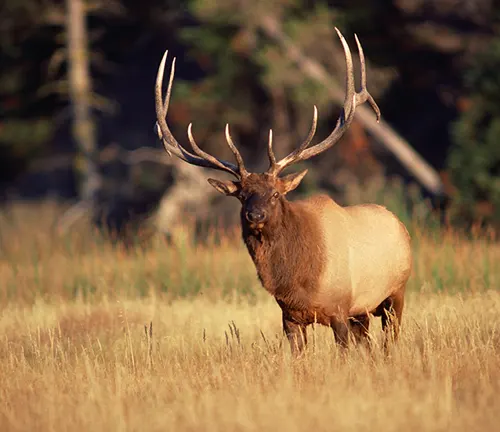

The Coconino National Forest’s diverse fauna, from iconic large mammals to elusive predators, arboreal creatures, and unique reptiles, underscores the ecological richness of this Arizona landscape. Conservation efforts within the forest contribute to the overall health of these ecosystems, providing a unique opportunity for wildlife enthusiasts to experience a rich tapestry of biodiversity.
Importance as a Wildlife Corridor and Habitat for Threatened Species
The Coconino National Forest plays a pivotal role as both a vital wildlife corridor and a crucial habitat for threatened species, contributing significantly to regional biodiversity and conservation efforts. Serving as a connective pathway between various ecosystems, the forest acts as a natural corridor for the movement of wildlife, facilitating genetic diversity and ensuring the health of populations across the landscape. This interconnectedness is particularly crucial for large mammals like elk and mule deer, allowing them to migrate seasonally and access essential resources.
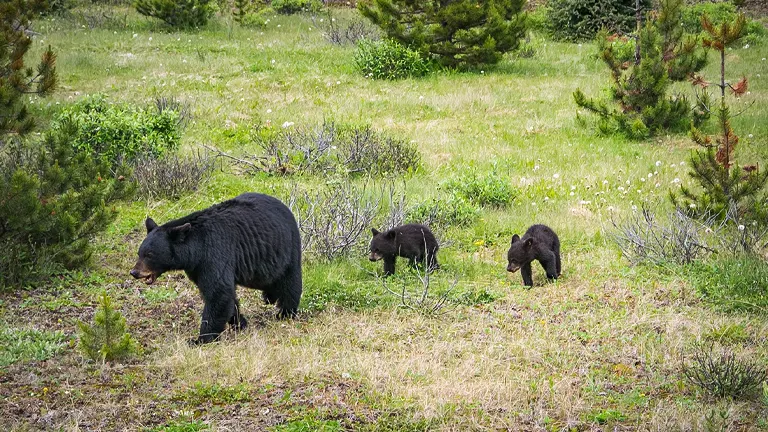
Moreover, the forest provides a sanctuary for threatened species, such as the Mexican spotted owl, within its old-growth forests. Conservation initiatives within the Coconino National Forest aim to safeguard these habitats, addressing the challenges faced by these species and contributing to broader regional conservation goals. By functioning as both a refuge and a corridor, this expansive forest underscores its significance in preserving the delicate balance of ecosystems and supporting the survival of diverse wildlife species.
Activities in Coconino National Forest for Visitors
1. Hiking and Trail Exploration
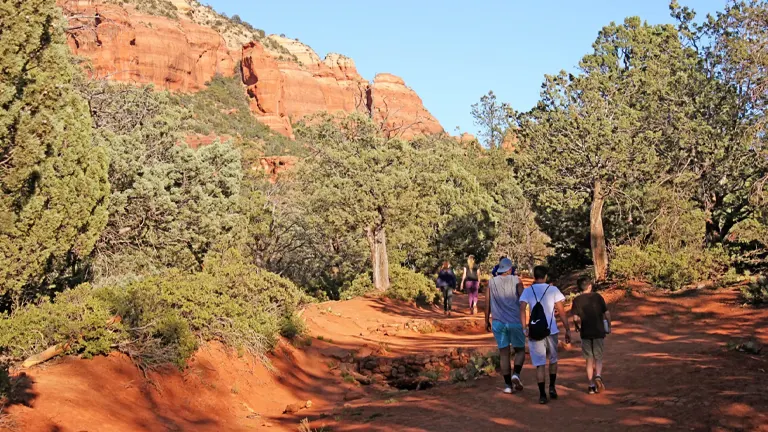
The Coconino National Forest offers an extensive network of hiking trails that cater to all levels of outdoor enthusiasts. Whether exploring the lush landscapes around Oak Creek or trekking through the high-altitude plateaus near Flagstaff, visitors can immerse themselves in the diverse beauty of the forest. Trails like the West Fork of Oak Creek Trail provide a scenic journey through canyons and alongside babbling creeks, creating a memorable hiking experience.
2. Scenic Drives
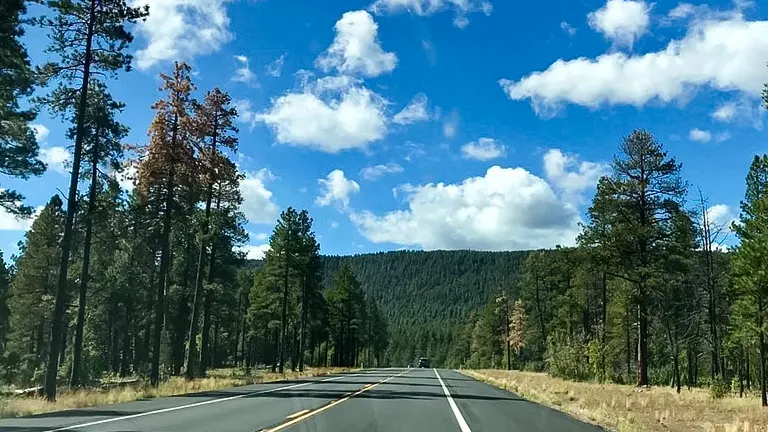
For those who prefer a more leisurely exploration, scenic drives within the Coconino National Forest offer breathtaking views of its diverse landscapes. The Forest Roads, such as the scenic drive along the Mogollon Rim, provide opportunities to witness the forest’s grandeur from the comfort of a vehicle. Visitors can take in panoramic vistas, ancient volcanic peaks, and the iconic red rock formations surrounding Sedona.
3. Wildlife Watching
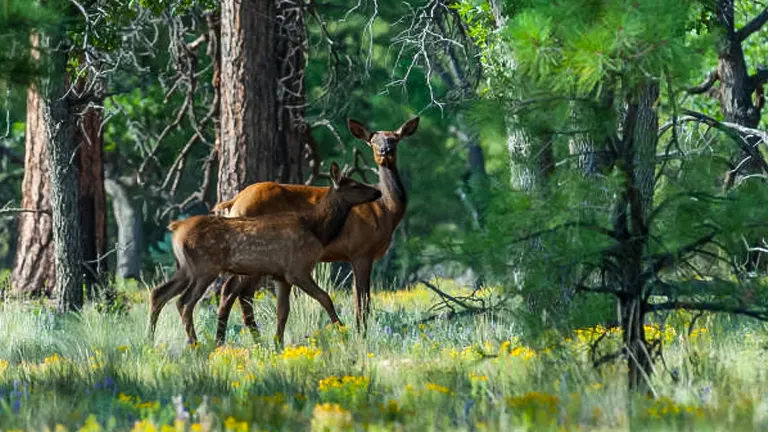
The forest’s diverse ecosystems make it an ideal habitat for a wide array of wildlife. Visitors can engage in wildlife watching activities, hoping to spot elk, mule deer, and a variety of bird species. The forest’s status as a wildlife corridor enhances the chances of encountering these creatures in their natural habitats, creating a unique and enriching experience for nature enthusiasts.
4. Fishing in Lakes and Streams

Coconino National Forest features numerous lakes and streams, including Upper Lake Mary and Oak Creek, providing excellent opportunities for fishing enthusiasts. Trout species thrive in these clear waters, offering a serene and picturesque setting for anglers. Fishing permits are typically required, adding to the regulated and sustainable nature of this recreational activity.
5. Camping and Picnicking
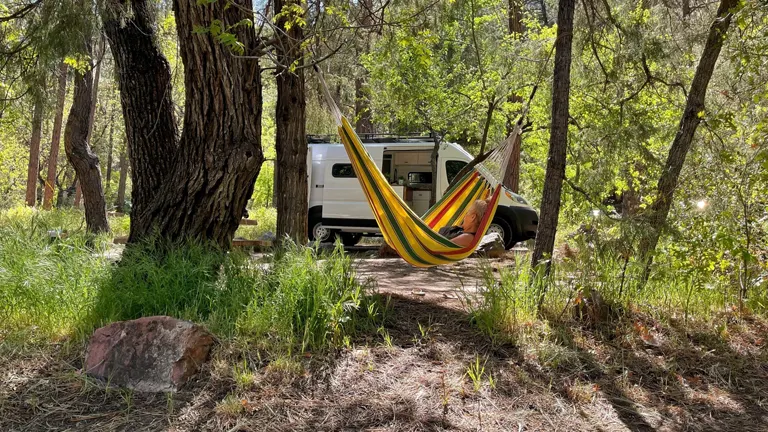
The forest provides an array of camping options, from established campgrounds to dispersed camping in more remote areas. Camping allows visitors to fully immerse themselves in the natural surroundings, with the sound of rustling leaves and the scent of ponderosa pine filling the air. Picnic areas are also available, providing a peaceful setting for outdoor meals amidst the forest’s beauty.
6. Mountain Biking

Mountain biking enthusiasts can explore designated trails that wind through the Coconino National Forest, offering a thrilling way to experience its diverse terrain. Trails like the Soldiers Pass Trail near Sedona cater to bikers of various skill levels, providing an adrenaline-packed adventure through red rock formations and shaded canyons.
7. Rock Climbing
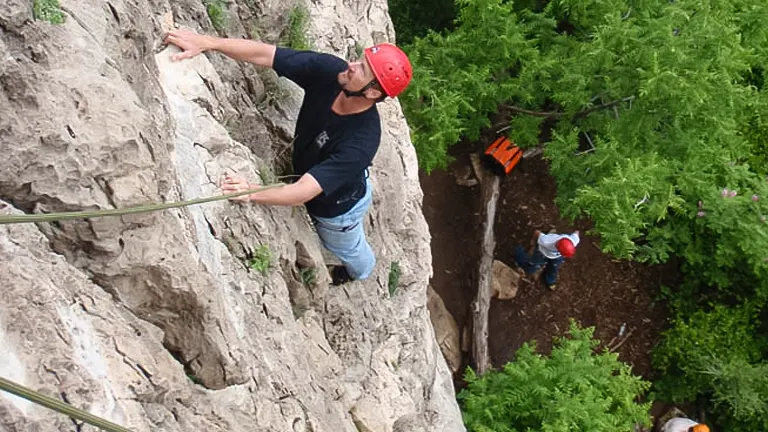
The unique geological features of the Coconino National Forest, especially around Sedona, make it a popular destination for rock climbing and bouldering. Climbers can challenge themselves on the red sandstone cliffs, with routes that offer both breathtaking views and a sense of accomplishment upon reaching the summit.
8. Stargazing
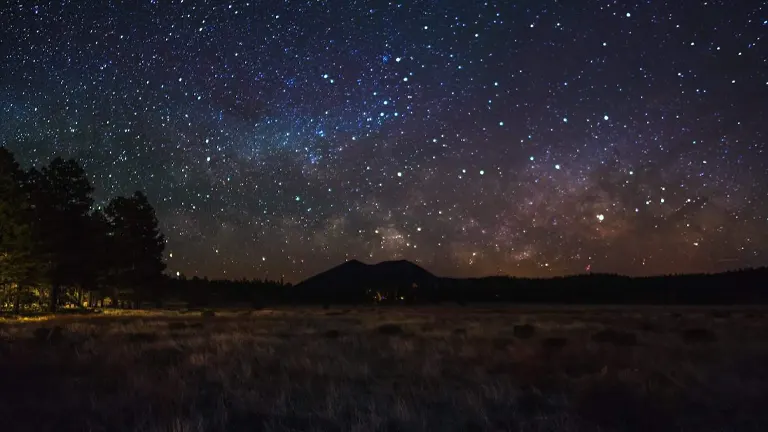
The forest’s expansive and less light-polluted areas make it an excellent location for stargazing. Visitors can witness a dazzling night sky, especially in higher elevations, where constellations, planets, and the Milky Way become visible. Stargazing events and programs are occasionally hosted to enhance the celestial experience for visitors.
The Coconino National Forest provides a diverse range of activities, ensuring there’s something for every nature lover and outdoor adventurer. Whether seeking serene moments in nature, engaging in recreational pursuits, or embarking on thrilling adventures, visitors can tailor their experience to fully appreciate the beauty and diversity this forest has to offer.
Conservation and Management
- Preservation of Old-Growth Forests: The Coconino National Forest prioritizes the preservation of old-growth forests, recognizing their ecological importance and the habitat they provide for various species, including the threatened Mexican spotted owl. Conservation efforts focus on maintaining the integrity of these ancient ecosystems, safeguarding biodiversity and contributing to the overall health of the forest.
- Wildlife Corridor Protection: Acknowledging the significance of the forest as a crucial wildlife corridor, management strategies in the Coconino National Forest aim to protect and enhance these connectivity pathways. By minimizing habitat fragmentation and ensuring safe passage for species like elk and mule deer, the forest management contributes to the genetic diversity and resilience of wildlife populations.
- Fire Management and Ecological Restoration: Given the fire-prone nature of the region, the Coconino National Forest implements comprehensive fire management strategies. This includes controlled burns and ecological restoration efforts to mimic natural fire regimes, reducing the risk of catastrophic wildfires. These practices not only protect human communities but also promote a healthy and resilient forest ecosystem.
- Recreational Use Regulation: To balance the demand for recreational activities with conservation goals, the Coconino National Forest regulates and manages visitor activities. This involves maintaining designated trails, managing camping sites, and implementing permits for certain activities like fishing and off-road driving. These measures help minimize the ecological impact of human activities, ensuring sustainable enjoyment of the forest.
- Invasive Species Control: Invasive plant species pose a threat to the native flora of the Coconino National Forest. Conservation efforts include proactive measures to control and eradicate invasive species, preventing them from outcompeting native vegetation. This helps maintain the natural balance of plant communities and protects the habitats that support diverse wildlife.
- Water Quality Management: The management of water resources within the Coconino National Forest is a critical aspect of conservation. Strategies are in place to monitor and maintain water quality in lakes and streams, ensuring the health of aquatic ecosystems and providing suitable habitats for various fish species. These measures contribute to the overall ecological resilience of the forest.
- Collaborative Partnerships: Conservation in the Coconino National Forest thrives on collaborative partnerships with local communities, environmental organizations, and governmental agencies. These partnerships enhance the effectiveness of conservation initiatives, combining expertise, resources, and community engagement to address complex challenges such as habitat protection, wildfire management, and environmental education.
- Climate Change Adaptation: Recognizing the impact of climate change on forest ecosystems, the Coconino National Forest integrates climate change adaptation strategies into its management plans. This includes monitoring changing weather patterns, assessing potential impacts on wildlife habitats, and implementing adaptive measures to promote the resilience of the forest in the face of a changing climate.
Conservation and management efforts within the Coconino National Forest demonstrate a commitment to balancing human use and ecological preservation. By addressing key challenges such as fire management, invasive species control, and habitat protection, the forest management contributes to the long-term sustainability and health of this diverse and cherished landscape.
Recommendation
I strongly suggest discovering the Coconino National Forest for a captivating blend of natural splendor and cultural importance. This forest, with its diverse ecosystems, iconic landmarks, and recreational possibilities, provides an unparalleled and immersive adventure. Engage in mindful outdoor activities like hiking and wildlife observation, actively participating in the continuous conservation endeavors. The picturesque trails, historic points of interest, and collaborative conservation initiatives make the Coconino National Forest an indispensable destination for those in search of a harmonious fusion of nature and recreational exploration.
Conclusion
In conclusion, the Coconino National Forest stands as a testament to the extraordinary diversity and beauty that the American Southwest has to offer. From the towering ponderosa pine forests and iconic red rock formations to the serene lakes and high-altitude plateaus, this expansive landscape captivates the senses and beckons explorers to its scenic trails. Beyond its picturesque allure, the forest plays a pivotal role in conservation, preserving old-growth forests, protecting vital wildlife corridors, and actively managing its resources to ensure a sustainable future. Whether you seek outdoor adventures, a tranquil retreat, or a deeper connection with nature, the Coconino National Forest welcomes all with open arms. It is not merely a destination; it is a living tapestry of ecological wonders and a sanctuary for those who yearn to explore the untamed beauty of the great outdoors.
Encouraging Responsible Visitation
Reflecting on my time in the Coconino National Forest, I am inspired to advocate for intentional exploration. This vibrant and continually evolving landscape flourishes when visitors actively connect with their surroundings. Whether you are a passionate hiker, a photography aficionado, or a family seeking a weekend escape, each moment spent in the Coconino National Forest offers an opportunity to actively contribute to its conservation efforts.
FAQs
- What makes the Coconino National Forest unique among other national forests in Arizona?
The Coconino National Forest stands out for its remarkable diversity, encompassing deserts, ponderosa pine forests, alpine tundra, and ancient volcanic peaks. It is the only forest in Arizona that surrounds towns like Sedona and Flagstaff, offering a blend of geological wonders and rich biodiversity. - Are there any designated wilderness areas within the Coconino National Forest?
Yes, the Coconino National Forest contains nine designated wilderness areas. Notable among them is the Kachina Peaks Wilderness, which includes the summit of the San Francisco Peaks, the highest point in Arizona. - How does the Coconino National Forest contribute to conservation efforts?
The forest actively engages in conservation by preserving old-growth forests, protecting wildlife corridors, implementing controlled burns for ecological restoration, and participating in collaborative projects with local communities and environmental organizations. - What recreational activities are available in the Coconino National Forest?
The forest offers a wide range of recreational activities, including hiking, scenic drives, wildlife watching, fishing, camping, mountain biking, rock climbing, and stargazing. Each activity caters to diverse interests and provides a unique way to experience the forest. - Are there specific regulations for visitors to ensure conservation and sustainability?
Yes, the Coconino National Forest has regulations in place to manage recreational activities responsibly. These include trail maintenance, camping regulations, fishing permits, and guidelines for off-road driving to minimize the ecological impact of human activities. - What wildlife species can visitors expect to encounter in the Coconino National Forest?
The forest is home to a variety of wildlife, including elk, mule deer, mountain lions, black bears, bobcats, Abert’s squirrels, golden eagles, and diverse trout species in its lakes and streams. - How does the Coconino National Forest address the challenge of wildfires?
The forest employs a comprehensive fire management strategy, including controlled burns and ecological restoration efforts, to mimic natural fire regimes and reduce the risk of catastrophic wildfires. These measures help protect both human communities and the forest ecosystem. - What is the significance of the Coconino National Forest as a wildlife corridor?
The forest serves as a vital wildlife corridor, allowing species like elk and mule deer to migrate seasonally and maintain genetic diversity. This interconnectedness contributes to the overall health and resilience of wildlife populations across the landscape.
As we bid farewell to the Coconino National Forest, let its diverse landscapes, from the towering San Francisco Peaks to the red rock formations of Sedona, linger in your memories. This expansive wilderness is more than a destination; it’s a living testament to the intricate dance between nature and conservation. The commitment to preserving its ecosystems and fostering sustainable recreation ensures that each visit is not just an adventure but a pledge to the enduring beauty of the American Southwest. So, until your next exploration, carry with you the echoes of rustling leaves, the scent of ponderosa pine, and the timeless allure of this southwestern sanctuary. The Coconino National Forest remains an open invitation to all who yearn for the untamed wonders of the great outdoors.


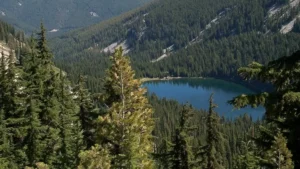
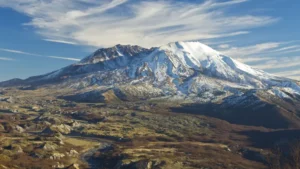

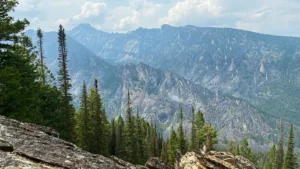
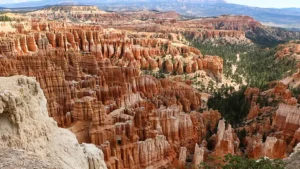

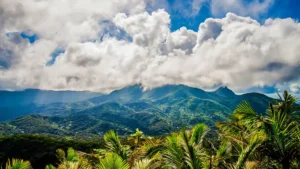
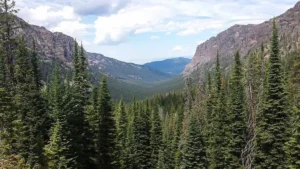
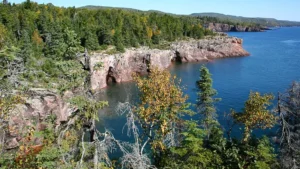
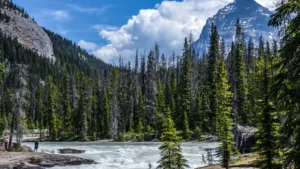


Leave your comment